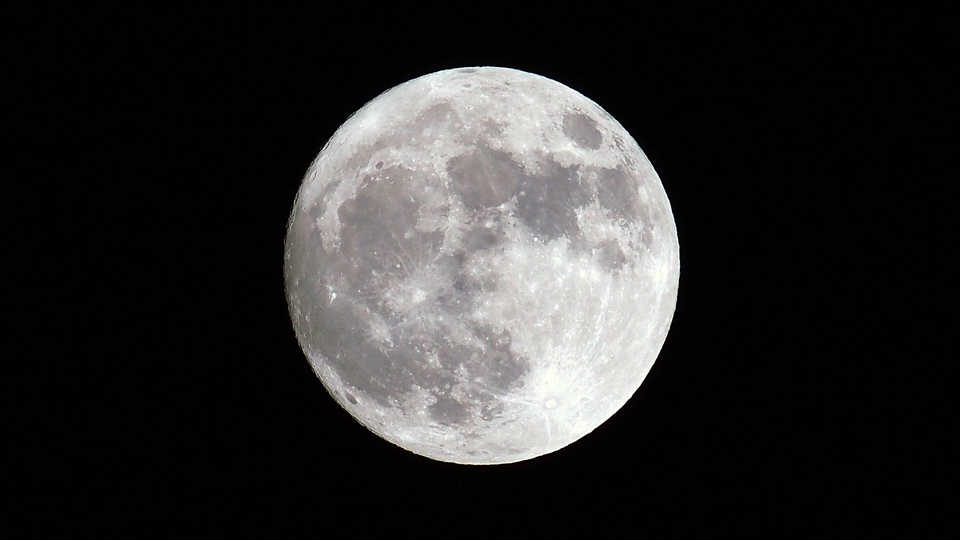Universe Update
Dating the Moon

The Moon is a mysterious object—extremely oversized for our planet (compared to other Solar System planet-moon ratios) and possessing a strangely varied surface. Many of these mysteries were solved when we brought back samples of the lunar surface on the Apollo missions between 1969 and 1972. (One such sample, from Apollo 17, is on display at the Academy where you pick up passes for the planetarium.) But mysteries are still being uncovered. Some may still contest the widely held conception that a single massive impact created the modern Earth–Moon system, scientific consensus has generally been reached on the mechanism of lunar formation—although there is still some argument over when the Moon came to be.
Based on the composition of those decades-old lunar samples, spectroscopic data of the surface, and density measurements provided by moonquakes, the composition of the Moon is very well understood. Earth and the Moon share a composition so similar that the two objects must be closely related, and it seems likely that they are products of a giant impact that obliterated both and formed the Moon in a period of rapid accretion. This made for a nearly completely molten Moon which separated (like forgotten salad dressing) with dense iron rich materials sinking to the bottom and the lighter (both in color and density) feldspars “floating” to the top. This gave rise to the Moon we know today—the light “highland” features are the remnants of the ancient crust and the dark maria are the more recent additions, iron-rich or mafic magma pooling on the surface.
Since this major impact must have happened very early in history of the Solar System, we know the Moon formed at least four billion years ago. To pinpoint the date further, some scientists analyzed zircons formed in that impact, placing the formation as far back as 4.45 to 4.47 billion years ago. But others have argued that impacts within the Solar System tell a different story. With the (quite literally) Earth-shattering event of the giant impact, evidence should be found around the Solar System where the spattered and shattered ejecta of the collision might be spotted and their energetic additions to the asteroid belt would show us how long they have been cooling off. But since their initial temperature would be easiest to know if we had a date for the impact, we run into a sort of recursive and unbeneficial “chicken and egg” problem…
That is, until this week. A paper in Science Advances by Barboni, Boehnke, and Keller et al. uses the radioactive decay of two different element processes found in the Apollo 14 samples, confirming a birthdate for the Moon—and the result is surprising.
The team finds that the Moon came into existence a mere sixty million years after the birth of our Solar System, making Earth’s satellite 4.51 billion years old! By comparing the decay rates of radioactive elements such as uranium and lutetium to lead and hafnium, respectively, the scientists came up with a more reliable way of dating. But it should be noted (as the authors were careful to include in their paper) that this method can only provide a lower limit for the age of the Moon, so the Moon must be at least 4.51 billion years old. If the Moon gets any older, it will be older than the Sun and, while impossible given our understanding of the Solar System, that would certainly garner some surprising headlines!
Image: Mélanie Barboni